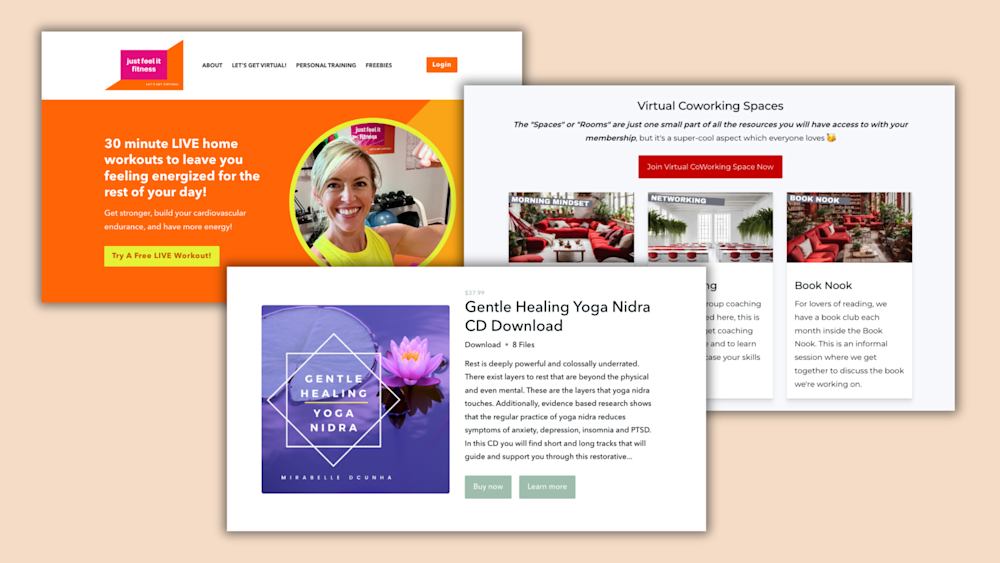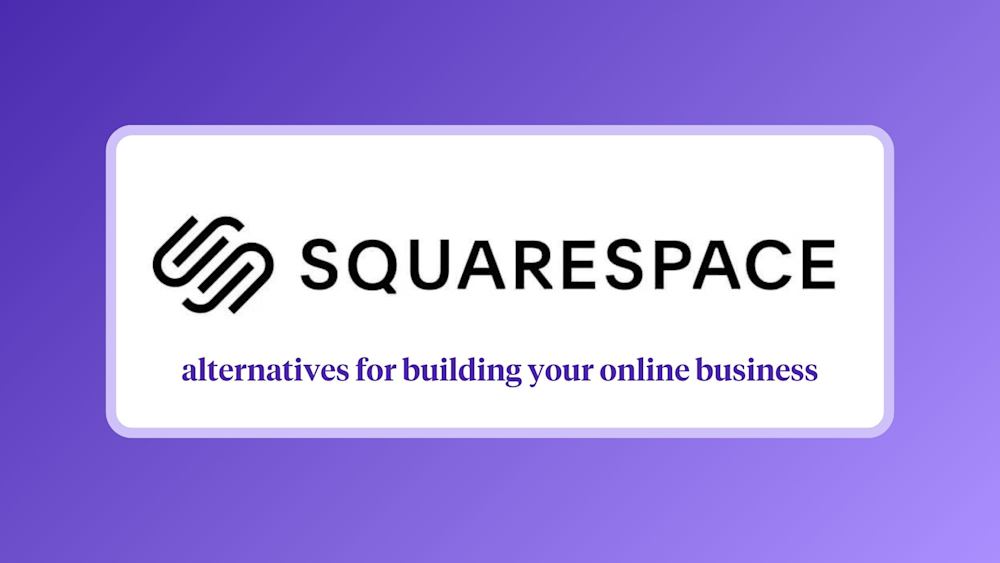A few days ago, I wanted to make something new for dinner. Feeling inspired, I hopped over to YouTube to watch a pasta-making tutorial.
The result was a fabulous homemade pasta dinner, all thanks to content I found online. I’m not alone, either. We’re all doing more, thanks to content.
On average, people consume nearly seven hours of content per day, and in 2020, people around the world spent an average of 145 minutes on social media daily.
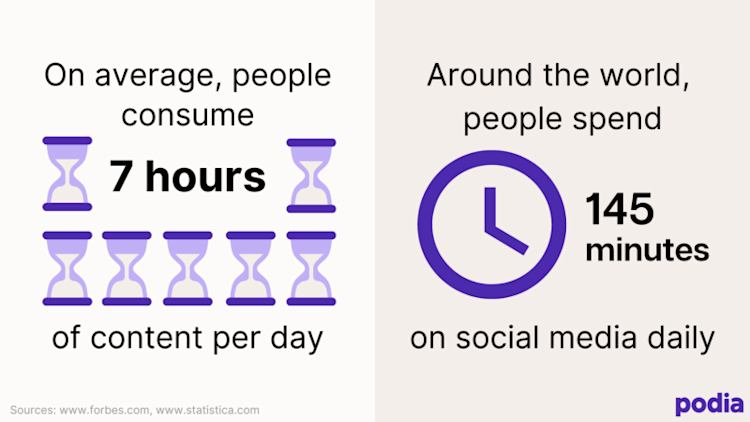
But what is this “content” that we spend so much time enjoying, and where does it come from?
Simply put, content is information. It can be social media posts, articles, videos, pictures, online courses, and really anything else that shows us something new.
Almost all of the content we consume is produced by content creators — not massive teams and conglomerates.
Content creators are the people who make the memes, how-to guides, travel vlogs, fashion roundups, and tech tutorials that keep us coming back to the internet again and again.
In this guide, we’re pulling back the curtain to talk about what it means to be a successful content creator today. We’ll cover what content creators do, how they make money, and easy ways you can get started too.
What is a content creator?
A content creator is anyone who shares information, inspiration, humor, experiences, or advice with a larger audience through content, usually digital.
Content creators use a variety of mediums to disperse their work. Here are some popular formats:
-
Videos or vlogs
-
Written articles and blog posts
-
Social media graphics, videos, and captions
-
Digital marketing and digital media assets
-
White papers
-
Music
-
Video game streams
-
Informational ebooks
-
Digital products and downloads
-
Online courses and training program
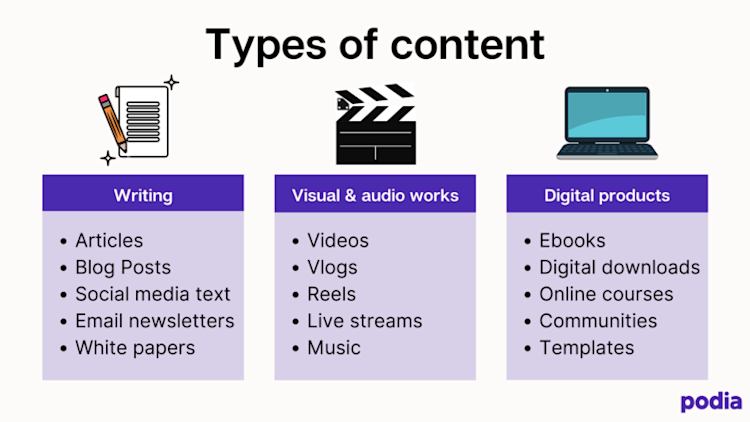
While making a living from posting online may have sounded like a pipe dream a few years ago, it’s a very real opportunity today.
It’s estimated that there are over 50 million content creators across the web. Of those, 2 million consider themselves to be professional, full-time creators, and the influencer marketing industry is expected to be worth a whopping $15 billion by 2022.
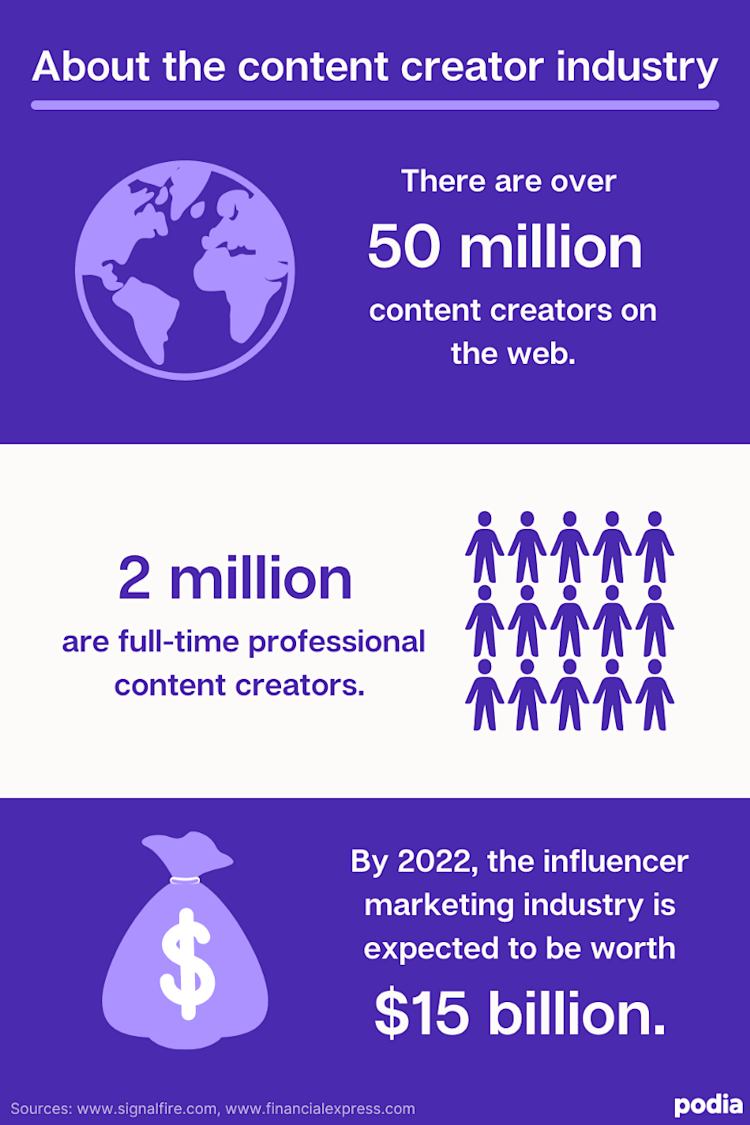
At Podia, we surveyed 2,000 creators to learn more about these new career possibilities unfolding around us. Out of all the respondents who had a day job, 73% said they planned to quit and become a full-time creator in the next year.
With more people than ever getting in on the creator economy, you might be wondering, “What does a content creator do?” I’m glad you asked!
What does a content creator do?
Content creators often do things like filming and editing videos, writing and researching blog posts, planning social media content, creating infographics, sharing content across social media platforms, and more.
There are two main routes you can take as a content creator. First, you can work as a salaried or freelance in-house content creator for a company.
Content marketing is used by 91% of businesses, and the demand for innovative individuals is high. In this role, you’ll usually work as part of a marketing team to develop and execute a content strategy.
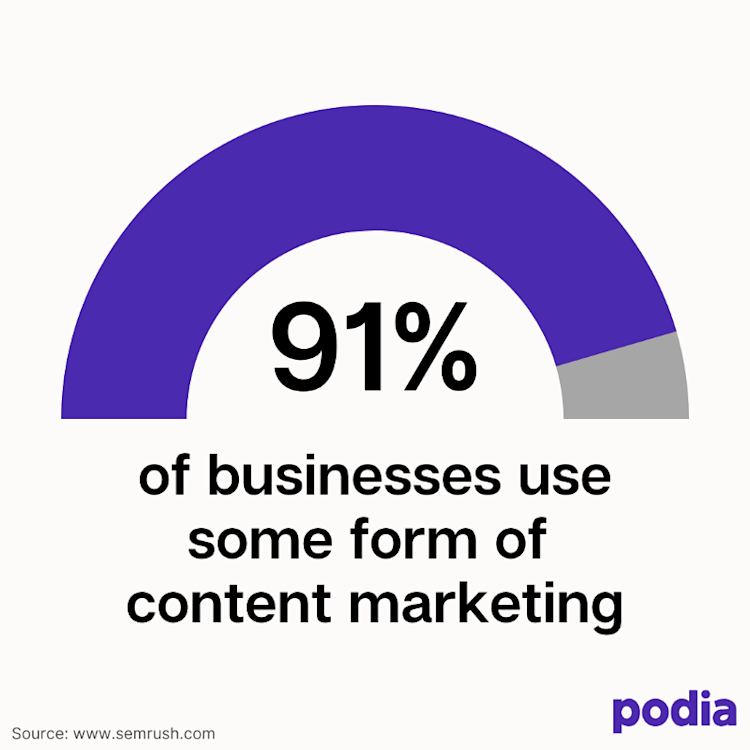
The second path you can take is as an independent content creator. In this role, you’ll create different types of content for your personal brand. This is best if you want to make money through influencer sponsorships, affiliate marketing, ads, or selling your own digital products.
Typically, if you’re an independent content creator, you’ll focus on one platform like Instagram, YouTube, TikTok, Twitch, Twitter, or a blog. A recent survey found that TikTok, YouTube, and Instagram are the most favored social media platforms among creators.
After you’ve chosen a platform, you’ll consistently make and share great content to build your audience.
As there are many types of content creators, there are many types of tasks you might do on a given day.
If you want to start a blog, for example, you might brainstorm content ideas, learn about SEO (search engine optimization), and use your graphic design skills to create shareable images for your articles.
Heather and Pete from It’s a Lovely Life explain that a typical day could include writing articles, creating material for their blogging courses, and keeping up with social media.

If you want to become a YouTube creator, you might research video topics, write scripts, film videos, and edit your footage.
Even though a good content creator will wear many hats throughout the day, the end goal is always the same: create engaging content with the end-user in mind.
Once you have built a following, you can monetize your social media account, channel, or webpage to earn a living from the content you create.
Up next, we’ll look at exactly how content creators make money and the earning potential of different platforms.
How much do content creators make?
We’ve all heard wild stories about popular Instagram influencers cutting hundred thousand dollar brand deals or YouTubers taking home multi-million dollar paychecks, but what can the average content creator realistically expect to make?
Before we crunch the numbers, let’s take a quick look at some of the ways content creators make money.
Sponsored posts or videos: With sponsored content, a company pays you to promote their product in a blog article, social media post, or video.
Brand partnerships: Brand deals are similar to sponsored content agreements but are usually long-term. In a study of 500 creators and influencers, 31% said that working with brands was their main source of income.
Affiliate marketing: With affiliate marketing, you promote a product to your audience using a special link. When someone makes a purchase, you earn a commission on the sale.
Digital product sales: You can create and sell your own online courses and digital downloads around topics in your niche. Tools like Podia make it easy to manage all your digital products in one place.
Advertising: If you run advertisements, advertisers post ads on your website or YouTube channel, and you get paid based on the number of impressions, views, or clicks.
Premium communities and subscriptions: Fans can pay for more exclusive content on a recurring basis in your community.
Donations: You can ask your followers to leave tips or donations if they enjoy your work.
Retreats, tours, and events: You can host events and experiences that your followers can attend in person or virtually.
On all platforms, the amount you make depends on several factors. Where you live, where your audience lives, your monetization methods, your audience size, your niche, and your engagement rates can all impact the size of your content creator paycheck.
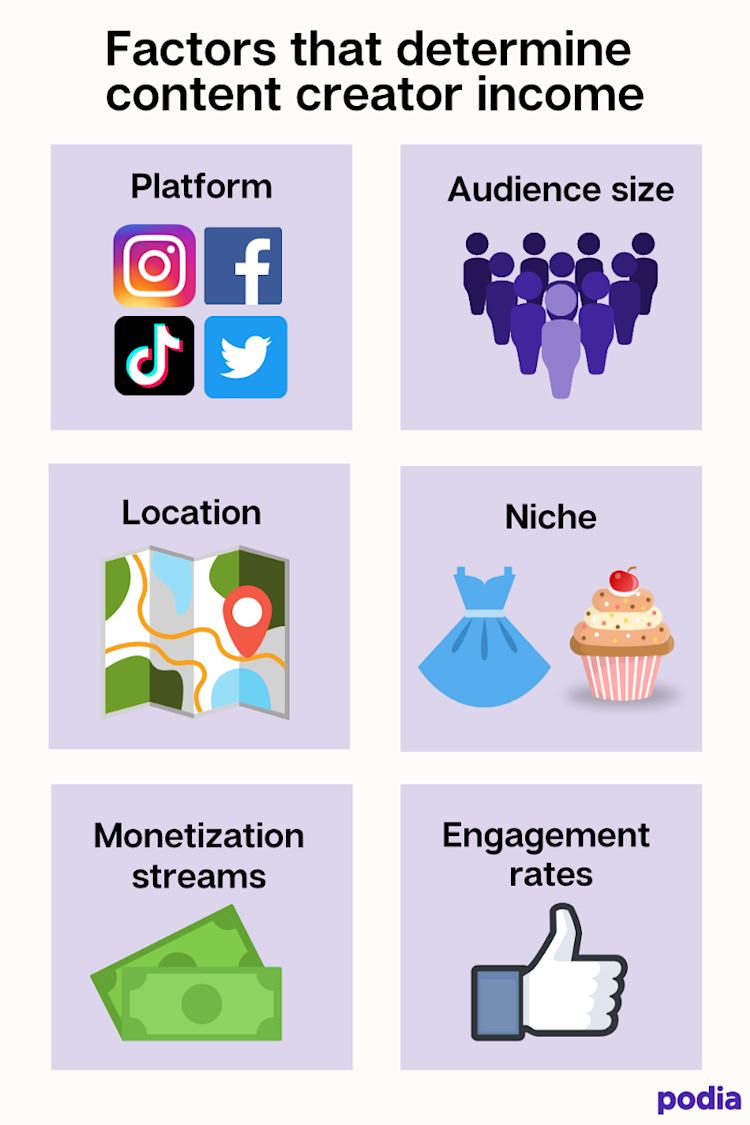
Furthermore, the creator industry doesn’t have a set of standardized rates for product promotions and services, so the amount people earn can vary immensely.
Still, it’s helpful to have a ballpark estimate for what you can make on popular platforms when you’re getting started, so I’ll break down some rough figures below.
Instagram influencer pay
While the current definition of “influencer” might only have been added to our dictionaries in 2019, people have been influencing others for centuries.
Simply put, an influencer is someone who many people like, trust, and listen to. With influencer marketing, companies hire these individuals to promote products to their audience.
80% of marketers agree that working with social media influencers is an effective form of marketing, and Instagram is consistently viewed as one of the best platforms for the job.
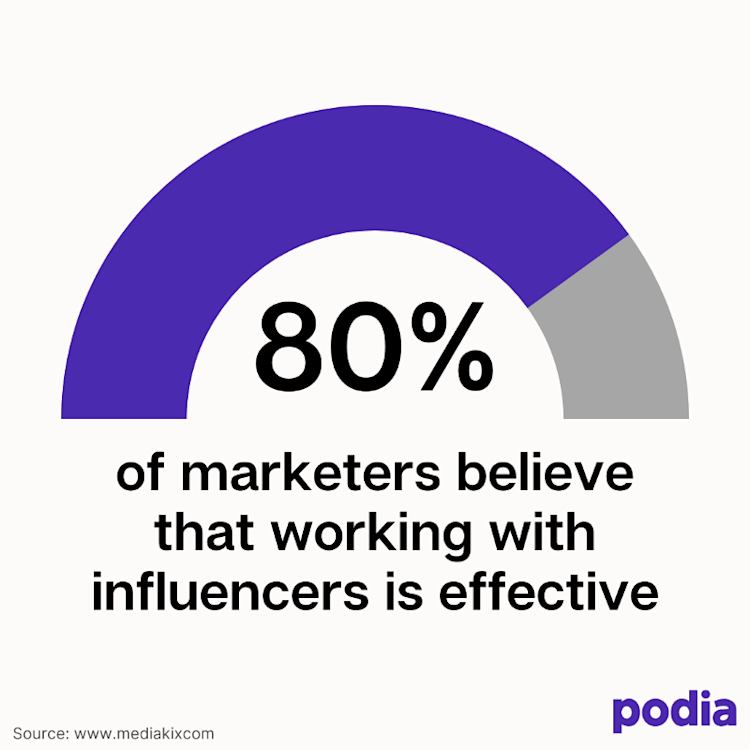
But how much can an Instagram creator expect to make?
As a rule of thumb, the standard starting rate is $100 per post per 10,000 followers. But keep in mind this is the starting rate.
You can and should charge more if you’re very niche or have a highly engaged audience, and you should always consider the time it takes you to create the desired product when setting your prices.
Producing high-quality content takes considerable time and effort, so make sure you’re not selling yourself short at the negotiation table.
Thankfully, you’re not limited to just sponsored content on Instagram. Consider travel and fashion creator Tina Lee, from Of Leather and Lace.
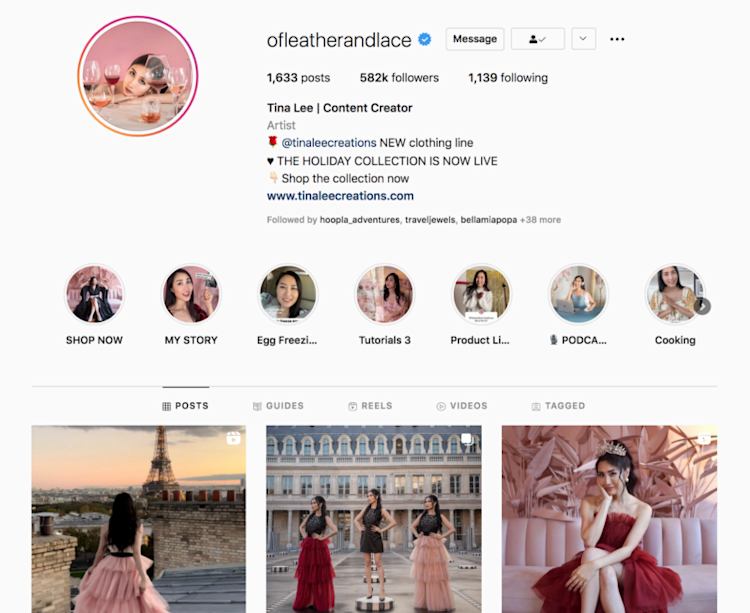
In addition to doing brand partnerships, she also has her own fashion line and runs an online course about how to become a full-time influencer.
With so many possibilities, it’s no wonder Instagram is a popular platform for content creators. But it’s definitely not the only one. Up next, we’ll take a look at trendy TikTok.
TikTok content creator pay
TikTok is a newcomer to the influencer game, but it shouldn’t be underestimated. A 2021 survey of brands and marketers found that 45% of respondents ran influencer campaigns on TikTok.
On average, TikTok creators with over 1 million followers earn a minimum rate of $1,631 per sponsored post. For creators with 100,000 to 1 million followers, the average minimum rate is $197 per post.
But truthfully, when it comes to sponsored content, the amount that individual TikTok creators actually earn is all over the map.
In a Buzzfeed article about influencer earnings, one creator with 1.6 million TikTok followers reported that they charge $12,000 per video. But another influencer with a following of 537,000 reported that they were only able to secure $500 per video.
In addition to earning money through brand deals and sponsored posts, TikTokers have access to the TikTok creator fund, a pool of money that pays creators based on video views and engagement.
To join, you need to have 100k views in the last 30 days, at least 10k followers, and you must live in the U.S.A., UK, France, Germany, Spain, or Italy.
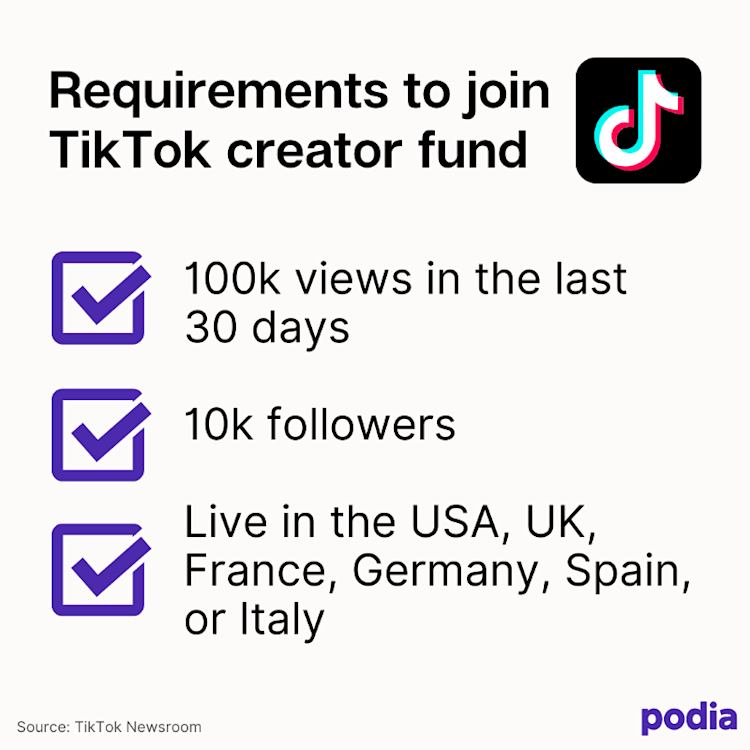
Creator fund earnings usually won’t constitute a full-time income, but some estimate that accounts with one million followers can earn anywhere from $1,000 — $30,000 per month.
In an article for Business Insider, another TikTok creator with 1.6 million followers said they earned anywhere from $9 — $38 per day from the creator fund. That same creator said that they charge around $600 per post for sponsored content.
Like before, you don’t have to do sponsored posts or join the creator fund to benefit from TikTok.
The platform can pave the way to big opportunities by giving your projects and passions more exposure. Music artist Abigail Barlow, for example, experienced monumental growth by sharing videos to promote new music and reach a wider audience.
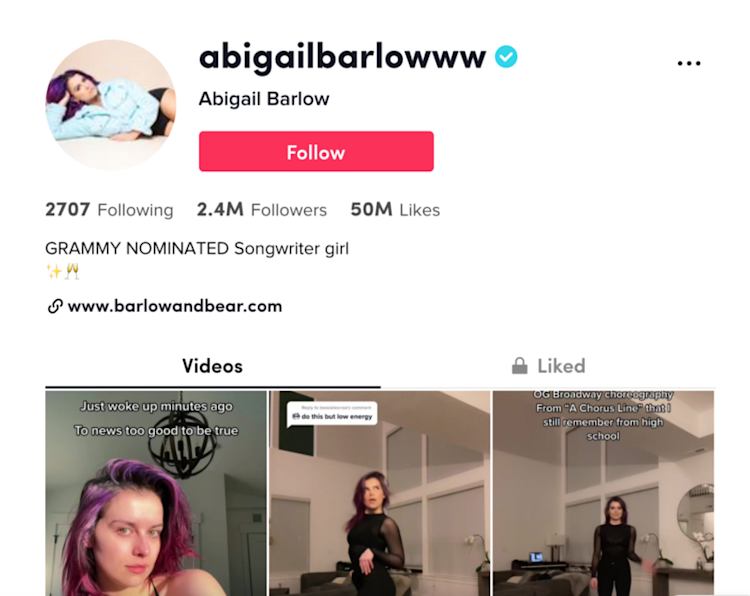
Bottom line, there are a lot of directions you can go with TikTok to earn a paycheck. The same thing is true for our next platform.
YouTube content creator pay
On YouTube, many creators choose to monetize their channels with ads. YouTube has paid out over $30 billion to creators, and you can join their program once you have 1,000 subscribers and 4,000 public watch hours in the past 12 months.

On average, YouTube channels make $18 per 1,000 ad views, which is about $3 — $5 per 1,000 video views. According to the YouTube income calculator by Influencer Marketing Hub, if you had 20,000 views per day, you could make around $1103 — $1837 per month.
Unfortunately, getting those numbers can be a big challenge. 97.5% of YouTube creators make less than $12,140 per year from ads.
But luckily, ads aren’t the only way to make money from your YouTube videos. Like with Instagram and TikTok, many YouTubers work with brands and sponsors for additional income.
You can also supplement your income by creating digital products and courses relevant to your specific audience. Take Podia creator Dr. Ali Abdaal, for example.
Dr. Ali Abdaal is a YouTuber with 2.37 million subscribers who makes substantial income from selling online courses.
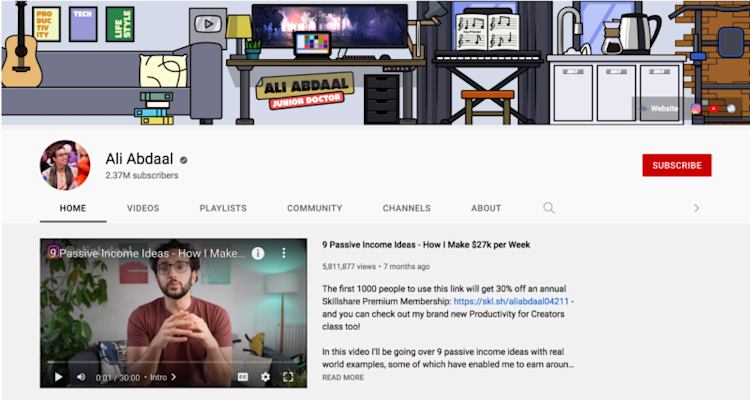
In his video breaking down his 2020 income, he explains that he earned about £100,000 pounds in YouTube ad revenue and over £500,000 from online courses and memberships.
Is anyone else’s jaw on the floor right now? While we’re obviously very big fans of this strategy, the key takeaway is that he mixes and matches his channels — and that’s wholeheartedly what we recommend doing with our next opportunity.
Blogging content creator pay
Blogging is another popular avenue for content creators, particularly those with a knack for writing. But how much do bloggers actually make?
At this point, it should come as no surprise that the answer varies dramatically.
According to Indeed, the average annual salary for bloggers is $37,073.
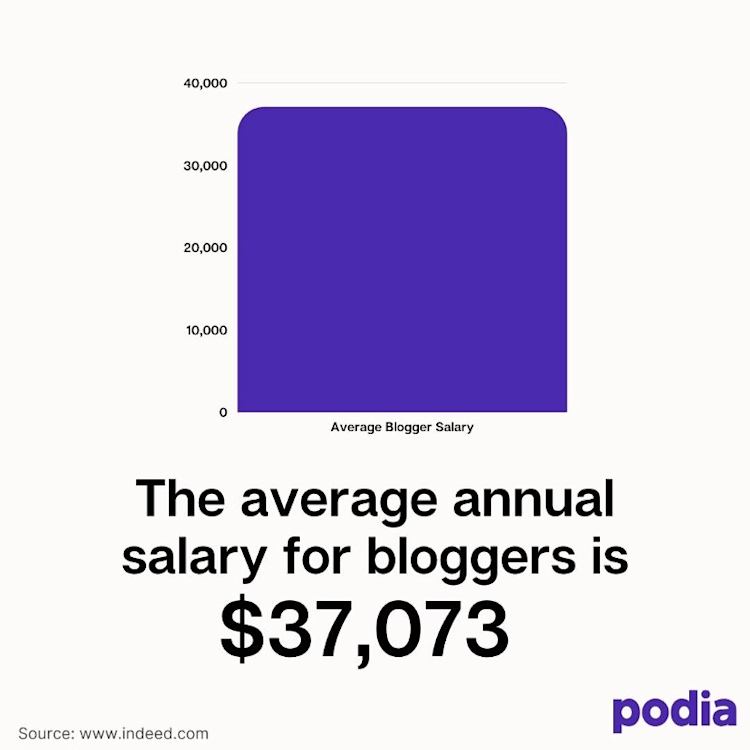
On the low end, one survey of 130 bloggers found that 38.9% make less than $500 per month.
Another survey of 600 bloggers by Digital Nomad Wannabe found that 27% of respondents didn’t make any money at all.
But on the flip side, that same survey also revealed that 14.5% of bloggers earned an impressive $5,000 per month or more.
Similarly, a RankIQ study of 803 blogs earning over $2000 per month or having at least 50,000 monthly sessions found that food and personal finance bloggers (the two most profitable niches) had a median monthly income of over $9,000 USD.
Bloggers make money through advertising, affiliate marketing, sponsored blog posts, and selling digital products.
Michelle Schroeder-Gardner, the creator behind the personal finance blog Making Sense of Cents, has made over $1,000,000 through her popular online course about affiliate marketing.
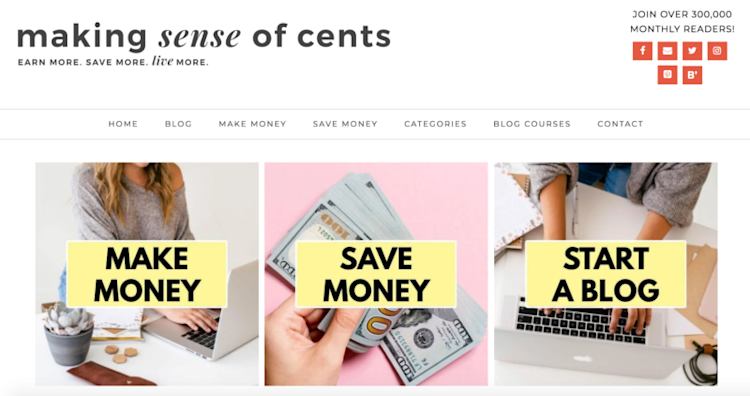
The best part? She did it all without a huge team or an extravagant launch.
For our next option, you might want to turn up the hype for your launch instead.
Podcast content creator pay
Podcasting is one of the newer trends to enter the creator arena, but it appears to be here to stay. Studies suggest that the number of podcast listeners has increased by over 10% in 2021, and the industry is expected to now be worth $1 billion.
But how much do podcasters make? A survey by WNYC Studios found that podcasters earn a median rate of $30 — $44 per hour.

Podcasts can make money through in-episode advertisements, affiliate marketing, live events, and selling premium content like memberships and courses.
According to AdvertiseCast, the industry standard for podcast advertising is $18 per 1,000 listeners for a 30-second advertisement or $25 per 1,000 listeners for a 60-second advertisement.
While this can be a good avenue for some, it takes a large audience to make a living off podcast advertisements alone.
That’s why successful podcaster Pat Flynn from Smart Passive Income recommends a combination of affiliate marketing, advertisements, and selling your own digital products, especially if you have a smaller following.
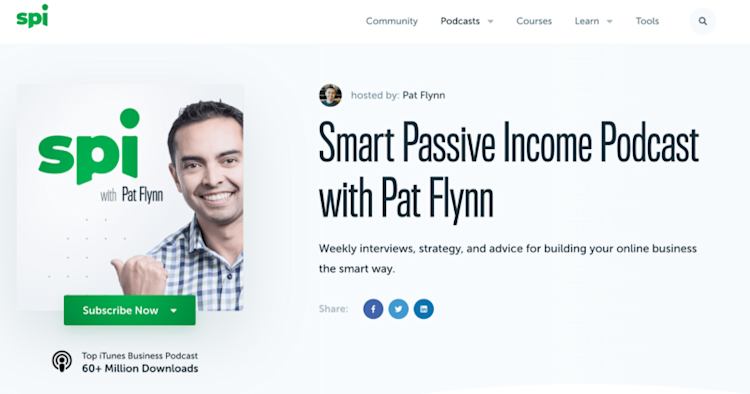
With diverse income streams, it’s less about chasing listens and more about providing specific, valuable resources for your target audience.
This brings us to the bigger question: which of these is the best way to make cash as a creator?
We’ve got a horse in this race, but here’s what we think — and what all of our customers have lived, too:
The best way to make money as a content creator
Sell online courses about your niche: If you’re known for creating content about a specific topic, create an online course to share your skillset with your audience on a deeper level.
In our recent analysis of 132,009 online course sales, we learned that courses cost $137 on average. When you use a platform like Podia with a plan that doesn’t charge any transaction fees, just making a handful of sales can amount to a hardy payday.
Sell digital products: Smaller ticket items like printables, templates, planners, and ebooks can be a great way to supplement your income as a creator. They also provide added value to your followers.
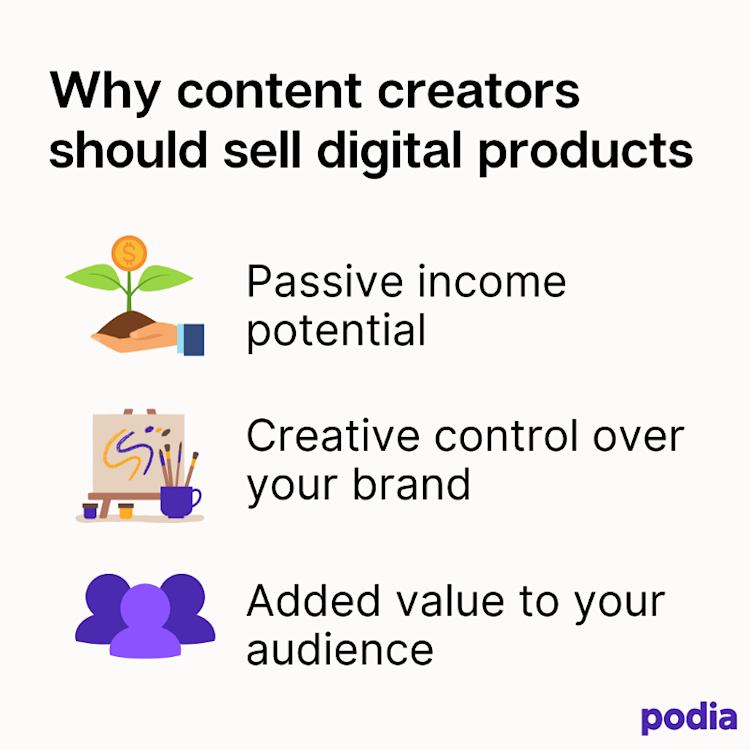
With digital products and courses, you have full control over what you produce and when. You can also earn more money on each sale, as opposed to chasing pennies from ads.
Want to give it a try? Start your 30-day free trial of Podia today.
How to become a content creator
It may sound overly simple, but the best way to become a content creator is to start making content and publishing it to your platform of choice. We recommend diving right into the deep end on this one.
Here’s what you need to do:
Decide what type of content you’d like to create: One of the nice things about being a content creator is that there are so many directions you can go.
If you’re passionate about video, you can start a YouTube channel or TikTok account. If you love writing, you can launch a blog or email newsletter. Think about the type of content that brings you the most joy to make and pick a platform that allows you to shine.
Determine your niche and scope out your market. Next, decide on your niche. Your niche is the main topic that you focus on when creating content.
With a niche in mind, you can use keyword research tools to learn about your target audience and see what people are actually searching for and consuming.
For example, a tool like TubeBuddy on YouTube can show you popular topics and keywords to help you decide what type of videos to create.
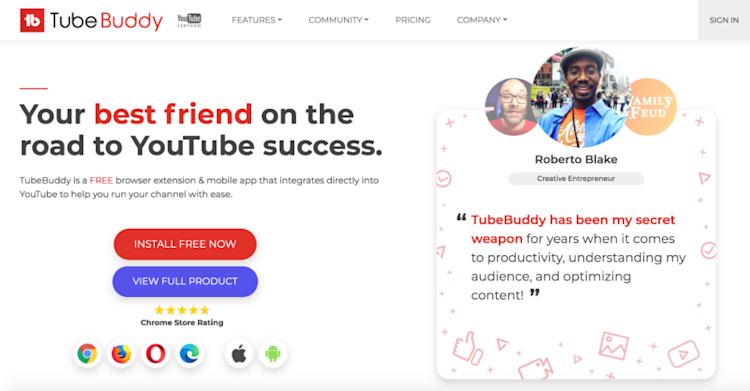
On Instagram, hashtag research is a good starting place to see what content is trending and getting high engagement.
Create your first piece of content. It won’t be perfect! It’s okay. Think about your ideal audience and what kind of information would entertain, inform, or inspire them.
Publish and interact with your audience. As scary as it might feel, the next step is to push the publish button on your first creation. Pay close attention to how your audience responds.
Take their feedback in stride, listen to it thoughtfully, know when you’re being trolled and when you’re being helped, and use those interactions to start the process over again.
Create consistently. Across the board, consistency is one thing most successful creators have in common. It takes time to build an engaged audience. This is a long-term endeavor, so it should be something you enjoy doing every day.
As someone who has been in the online content creation game for many years, I know it can be discouraging to read stories about others going viral and (seemingly) making millions overnight.
But I promise there’s nothing wrong with taking your time, finding the right people, and providing as much value as you can along the way.
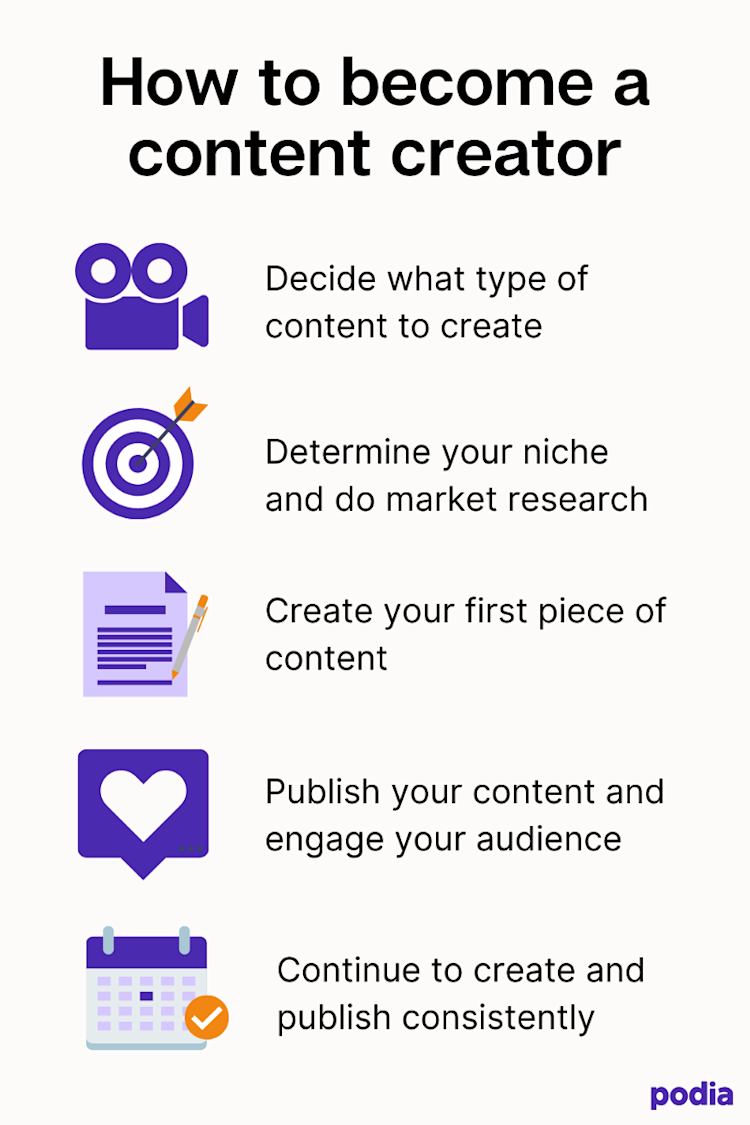
Obviously, these steps offer a very top-level overview of what it means to be a content creator, but you know we’re big fans of digging into the details.
Here’s a mix of some of our favorite guides, on Podia and beyond, for becoming creators on popular platforms:
-
In our YouTube for creators guide, we’ll chat about how to build an audience that loves your videos
-
Discover ways to build your brand as an Instagram influencer with these helpful tips
-
Learn how to become a blogger and create valuable written content that gets noticed
-
Likewise, this guide covers how to become a successful copywriter
-
Become a podcast content creator in this guide to podcast monetization
-
Explore the world of video game streaming in this creator guide from Twitch
Making it in the content creation industry takes a lot of work, but the possibilities are endless. Follow your passion, create consistently, and always remember who you’re helping through your work. Soon, you’ll be on your way to a fulfilling experience creating content people love.


